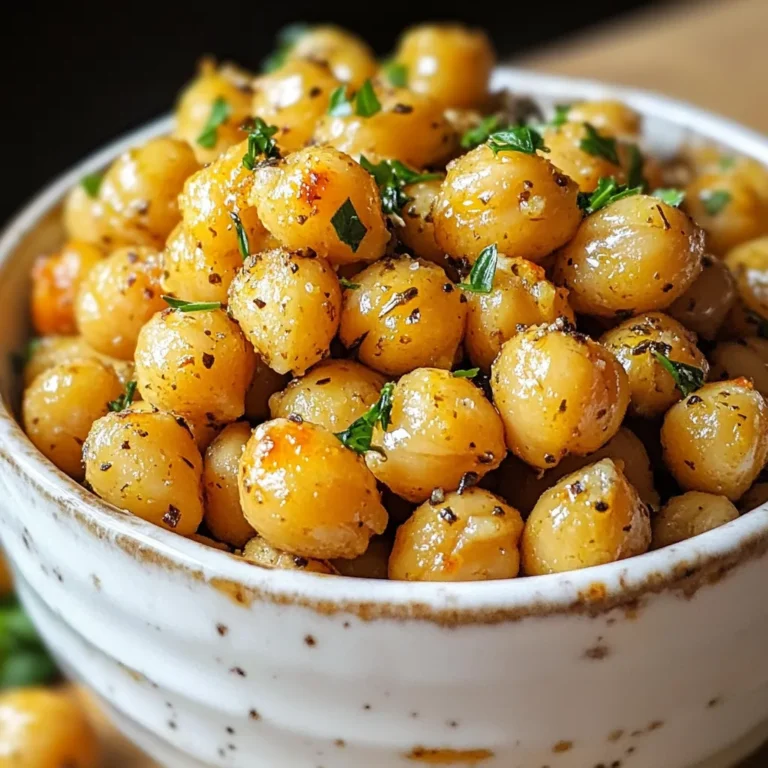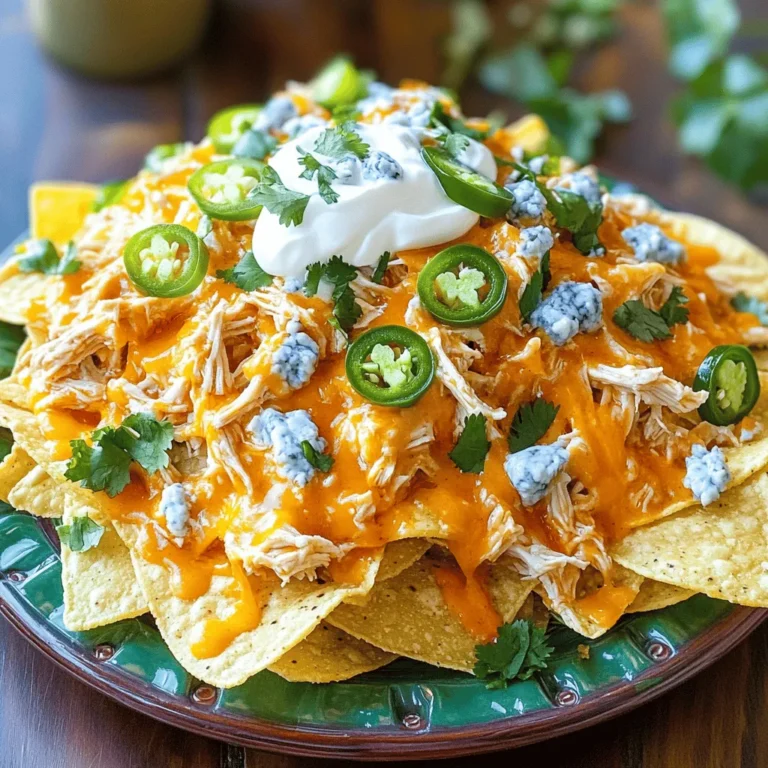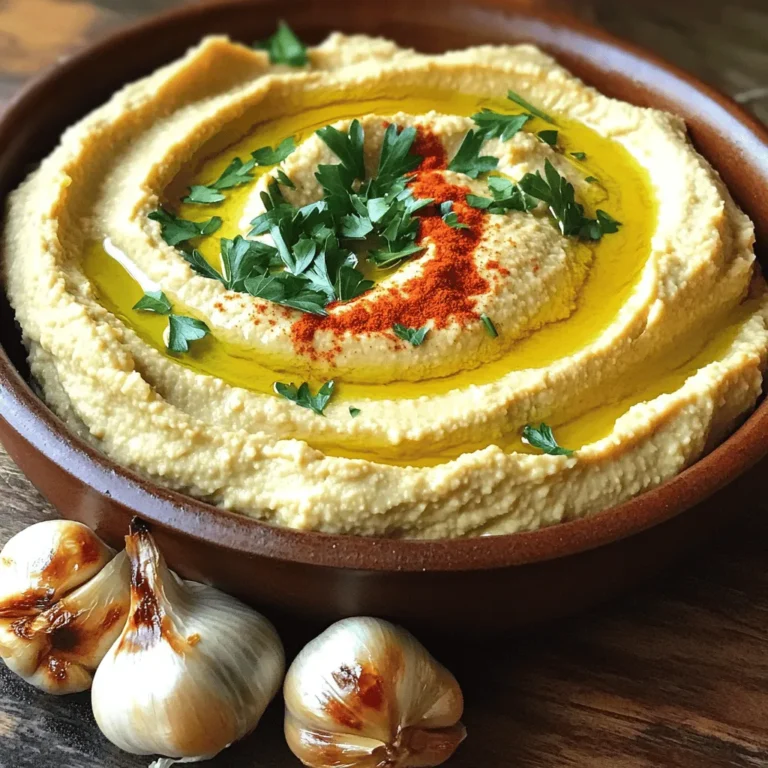Vegan Pad Thai Lettuce Wraps Fresh and Flavorful Meal
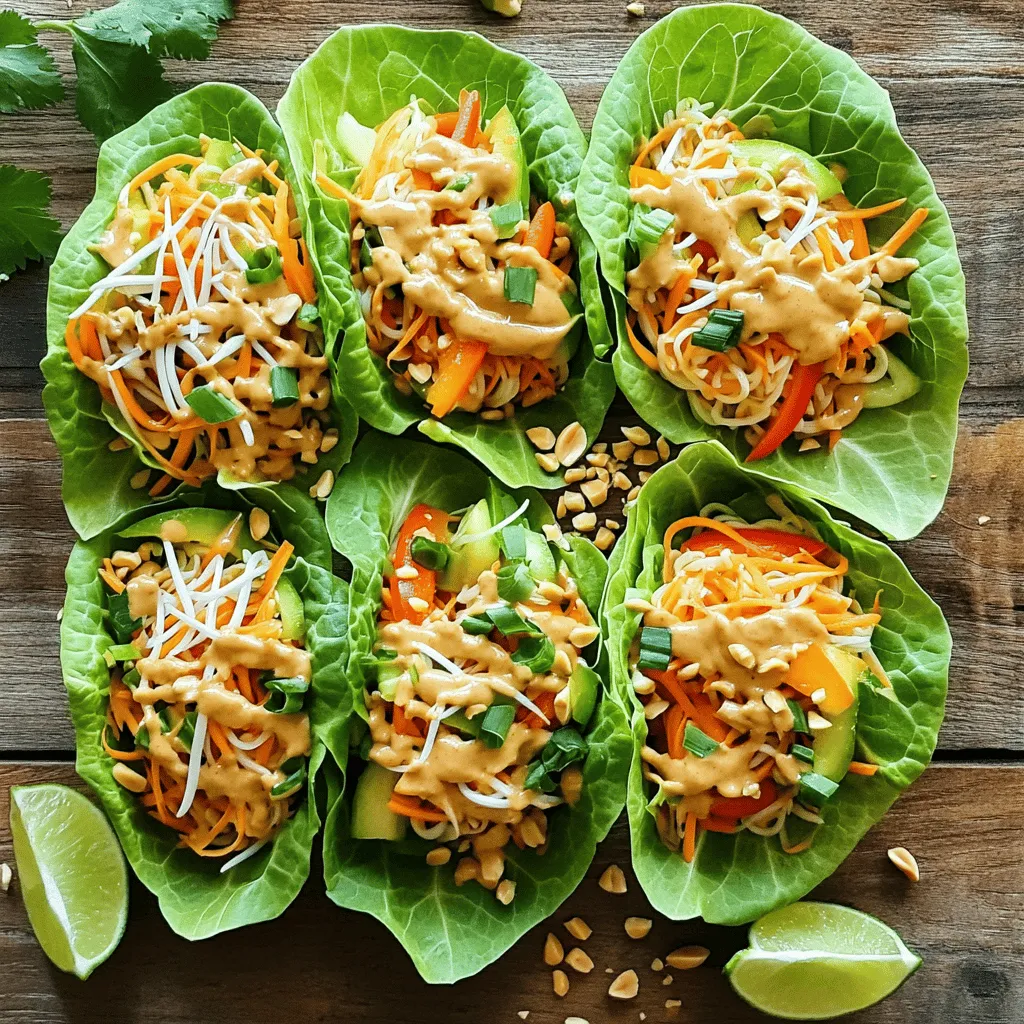
If you’re craving a fresh, vibrant meal that’s both healthy and simple to make, these Vegan Pad Thai Lettuce Wraps are for you! Packed with colorful veggies and a flavorful sauce, they bring a tasty spin to the classic dish. Whether you’re a seasoned vegan or just looking to try something new, you’ll love the crunchy texture and bold flavors. Join me as I guide you through making these delightful wraps!
Ingredients
Main Ingredients for Vegan Pad Thai Lettuce Wraps
– Butter lettuce or Romaine leaves
– Rice noodles
– Fresh vegetables:
– 1 cup shredded carrots
– 1 bell pepper, thinly sliced
– 1 cup bean sprouts, rinsed
– 1/2 cup green onions, chopped
Sauce Ingredients
– 3 tablespoons soy sauce or tamari
– 2 tablespoons creamy peanut butter
– 1 tablespoon lime juice
– 1 teaspoon maple syrup
Optional Garnishes
– 1/4 cup chopped peanuts
– Fresh cilantro
– Lime wedges
When you gather these ingredients, pay attention to freshness. Choose crisp lettuce and vibrant veggies. They add crunch and color to your dish. The rice noodles give a nice base for your filling. You can use gluten-free options if needed. The sauce combines rich flavors that tie everything together. Maple syrup adds a hint of sweetness, balancing the saltiness of soy sauce. Don’t skip the garnishes; they elevate your wraps. Chopped peanuts add crunch, while cilantro brings freshness. Lime wedges offer a zesty kick. This recipe is both simple and full of depth.
Step-by-Step Instructions
Preparation of Ingredients
– Cook rice noodles according to package instructions.
– Chop and prepare fresh vegetables.
Start by cooking the rice noodles. Follow the package instructions closely. Once cooked, drain them and set them aside to cool. Next, take fresh vegetables like carrots, bell peppers, and green onions. Chop the carrots into thin strips. Slice the bell pepper into thin pieces. Finally, rinse the bean sprouts under cold water.
Mixing the Pad Thai Filling
– Combine vegetables and noodles in a large mixing bowl.
– Prepare and add sauce.
In a large mixing bowl, mix the cooked rice noodles, shredded carrots, bell pepper, bean sprouts, and half of the chopped green onions. Use your hands or a spoon to toss these ingredients well. Now, let’s make the sauce. In a small bowl, whisk together soy sauce, creamy peanut butter, lime juice, maple syrup, and sriracha. Blend until smooth. Drizzle the sauce over the noodle and veggie mix. Toss gently until everything is coated.
Assembling the Lettuce Wraps
– Filling the lettuce leaves and tucking them.
– Plating the wraps for serving.
Take a lettuce leaf and place a generous spoonful of the Pad Thai mixture in the center. Top it with chopped peanuts and the remaining green onions. Fold the lettuce leaf like a taco, tucking in the edges to secure the filling. Repeat this until all filling is used. Plate the wraps nicely and serve with lime wedges for a fresh burst. You can also add fresh cilantro on top for extra flavor.
Tips & Tricks
Enhancing Flavor
To boost flavor in your Vegan Pad Thai Lettuce Wraps, consider two key tips. First, you can adjust spice levels with sriracha. Start with a little and add more if you like heat. This sauce adds a nice kick without overwhelming the dish. Second, add fresh herbs like cilantro or basil. They bring bright flavors and freshness, making each bite exciting.
Meal Prep Suggestions
Preparing ingredients in advance can save time. Cook rice noodles and chop veggies the day before. Store them in separate containers in the fridge. This keeps everything fresh and ready to use. For the best results, assemble wraps just before serving. This keeps lettuce crisp and prevents sogginess.
Serving Suggestions
Pair your wraps with simple side dishes for a complete meal. Fresh spring rolls or a light cucumber salad work well. For dips, try peanut sauce or a zesty lime dressing. These options add more flavor and make your meal even more enjoyable.
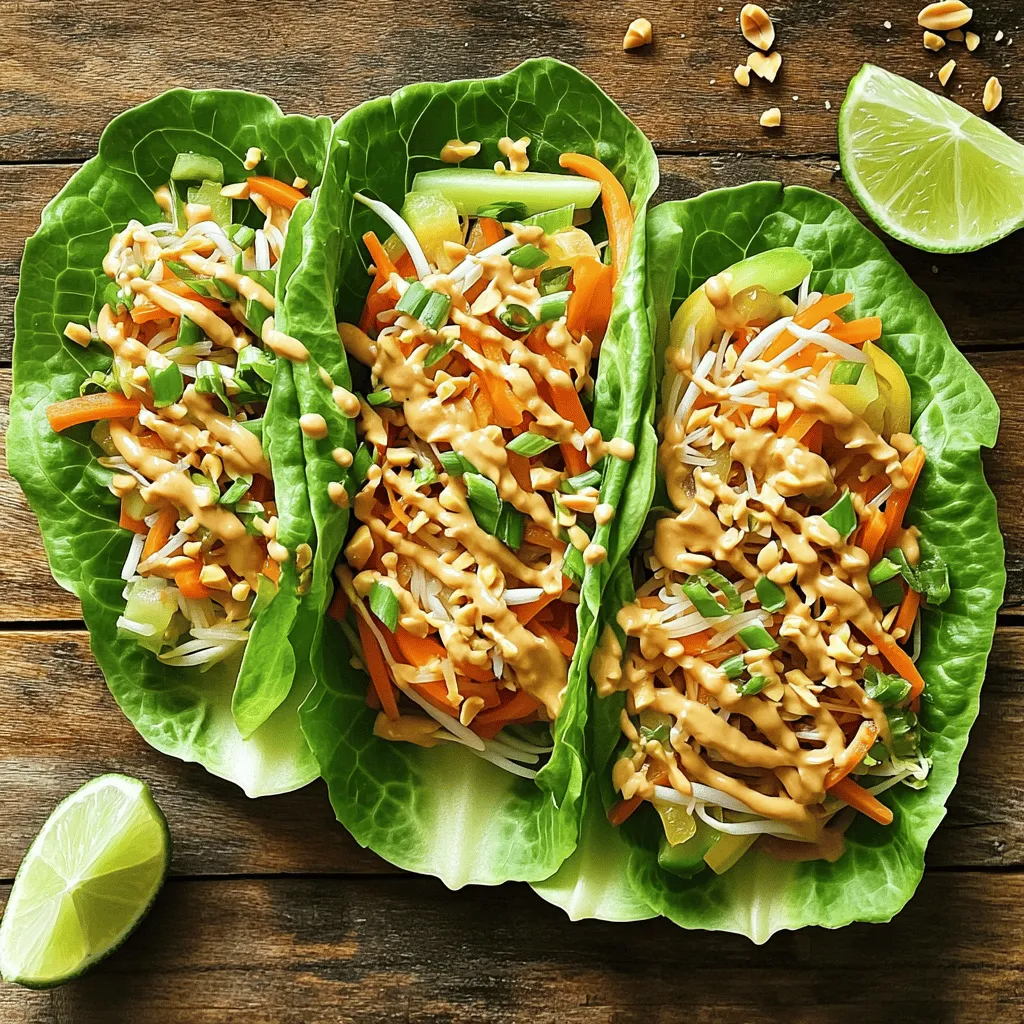
Variations
Alternative Protein Sources
You can add tofu or tempeh for extra protein. Tofu has a soft texture and soaks up flavors well. Tempeh offers a nutty taste and a firmer bite. Both options are easy to cook. Just sauté them until golden brown. You can also use edamame. They add a nice pop and bright color. Edamame is packed with protein too.
Different Vegetable Combinations
Feel free to mix in seasonal vegetables. You can use snap peas, zucchini, or bok choy. These veggies add crunch and freshness. Customizing based on your taste is fun. Try adding radishes for a peppery kick. Or use spinach for a nutrient boost.
Gluten-Free Options
If you need gluten-free wraps, use rice paper instead of lettuce. Simply soak them in warm water until soft. They work well and hold the filling nicely. You can also swap rice noodles for gluten-free noodles. Look for rice or quinoa noodles at your store. This way, everyone can enjoy the meal.
Explore these options to make your Vegan Pad Thai Lettuce Wraps unique.
Storage Info
Storing Leftovers
To keep your Vegan Pad Thai lettuce wraps fresh, store them in the fridge. Use airtight containers to prevent moisture loss. You can layer the wraps with parchment paper to avoid sticking. Keep the sauce separate for the best taste. This helps maintain the crispness of the lettuce.
Reheating Instructions
When reheating the filling, do it gently. Use a non-stick pan over low heat. Stir often to avoid burning. You can add a splash of water to keep it moist. To serve, place the reheated filling back in fresh lettuce leaves. This keeps the wraps crisp and tasty.
Freezing Tips
You can freeze the filling but not the assembled wraps. Freezing the components separately keeps the flavors fresh. Use a freezer-safe bag for the filling. Remove as much air as possible to prevent freezer burn. When ready to eat, thaw the filling overnight in the fridge.
FAQs
How do I make Vegan Pad Thai Lettuce Wraps less spicy?
To lower the heat, reduce or skip the sriracha. You can also use sweet chili sauce instead. Adding more peanut butter and lime juice can help balance the spice. Here are some tips to adjust spice levels:
– Use less sriracha or omit it.
– Add more creamy peanut butter for a richer flavor.
– Include a splash of coconut milk for creaminess.
Can I make this recipe in advance?
Yes, you can prep many parts ahead. Cook rice noodles and chop veggies a day early. Store items separately in the fridge. This keeps everything fresh and crunchy. Best tricks for meal prepping include:
– Keep the sauce in a sealed container.
– Assemble wraps only when ready to eat.
– Store lettuce leaves in a damp paper towel to keep them crisp.
What are some alternative ingredients I can use?
You can swap ingredients based on what you have. If you need gluten-free options, use tamari instead of soy sauce. For a nut-free version, use sunflower seed butter. Here are some suggestions for substitutions:
– Use zucchini noodles instead of rice noodles.
– Replace peanuts with sunflower seeds.
– Try bok choy or cabbage leaves for wraps.
How to store leftover lettuce wraps?
To store leftovers, place them in an airtight container. Keep the filling and lettuce separate to avoid wilting. This way, they stay fresh longer. Proper storage methods include:
– Wrap leftover lettuce in a damp paper towel.
– Store the filling in a separate container.
– Use within two days for the best quality.Enjoy making these Vegan Pad Thai Lettuce Wraps!
In this blog post, we explored how to make Vegan Pad Thai Lettuce Wraps. We covered the main ingredients and sauce you need, plus tips for enhancing flavors. You learned the step-by-step process, from cooking rice noodles to assembling the wraps. We also discussed meal prep and storage tips to keep your wraps fresh.
This dish is versatile and easy to customize, making it perfect for everyone. Enjoy these fresh, healthy wraps at your next meal!
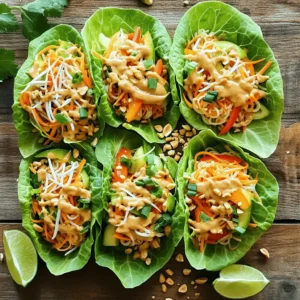

![- Ripe mango, diced - Ripe avocados, diced - Small red onion, finely chopped - Medium red bell pepper, finely diced - Jalapeño peppers, deseeded and minced Fresh produce is key for a bright flavor. I love the sweet, juicy mango and creamy avocado. Choose ripe mangoes for the best taste. They should feel soft, but not mushy. Avocados should also yield slightly when pressed. This gives the salsa a smooth texture. - Fresh cilantro leaves, chopped - Juice of fresh limes - Salt and freshly cracked black pepper - Optional: Honey for sweetness Cilantro adds a fresh kick. Lime juice brightens the mix. Salt and pepper bring out all the flavors. Honey is a fun twist. It balances the heat from the jalapeños. Adjust the salt and pepper to match your taste. - Suggested amounts for a balanced flavor - Importance of using ripe ingredients Use equal amounts of mango and avocado for balance. A small onion and bell pepper add crunch. Adjust jalapeños based on your spice level. Ripe ingredients really make a difference. They enhance the taste and texture of the salsa. Remember, fresh is always best! For the full recipe, check out the complete guide. Gather your ingredients first. You will need: - 1 ripe mango, diced into small cubes - 2 ripe avocados, diced into small cubes - 1 small red onion, finely chopped - 1 medium red bell pepper, finely diced - 1-2 jalapeño peppers, deseeded and minced - 1/4 cup fresh cilantro leaves, chopped - Juice of 2 limes - Salt and freshly cracked black pepper, to taste - Optional: 1 teaspoon honey You’ll want a sharp knife for dicing and a cutting board. A large mixing bowl is also essential for combining everything. Start by placing the diced mango and avocado into the bowl. Next, add the chopped red onion and diced red bell pepper. Use a large spoon to mix gently. Be careful not to mash the avocado. When you add the minced jalapeño, adjust the amount for your spice level. Add the cilantro leaves, then squeeze fresh lime juice over the mix. Season with salt and pepper, and if you like, stir in honey for a touch of sweetness. Gently toss the ingredients together until well combined. This keeps the avocado pieces intact and makes for a prettier salsa. Letting the salsa sit is key. This helps the flavors blend together nicely. I recommend letting it sit for at least 10 minutes at room temperature. During this time, the lime juice and salt work their magic, enhancing the overall taste. Enjoy this fresh delight with your favorite chips or as a topping on grilled dishes. For the full recipe, check out the details above. How do you choose ripe mangoes and avocados? Look for soft spots. A ripe mango gives slightly when pressed. The skin should be a mix of green and yellow. For avocados, check the skin color. It should be dark green or black. Gently squeeze; it should feel soft but not mushy. Fresh herbs and vegetables make your salsa shine. Look for bright colors and firm textures. Cilantro should smell fresh and green. Bell peppers should be smooth and shiny. Avoid any with brown spots or wrinkles. How can you keep avocados intact? Use a sharp knife for cutting. Dice them gently. Avoid stirring too hard when mixing. Use a large spoon to gently fold the salsa. For tossing the salsa, you want to be careful. Start by mixing the firmer ingredients first. Then, add the avocados and mango last. This way, you avoid mashing them. How can you adjust spice levels with jalapeños? Start with one jalapeño. Taste before adding more. If you want it spicier, add more minced peppers. Remember, you can always add spice, but you can't take it away! To balance sweetness, you can add honey or other sweeteners. A teaspoon of honey works wonders. It brings out the fruit flavors without being too sweet. You can also try agave syrup or maple syrup for a twist. For the full recipe, check out the details above. Enjoy your Mango Avocado Salsa! {{image_4}} You can make mango avocado salsa even more exciting. Adding fruits like pineapple or peach gives it a sweet twist. The juicy sweetness of pineapple pairs well with mango. Try diced peaches for a softer sweetness. These fruits bring unique flavors that brighten up the dish. Herbs can also change the taste. Instead of cilantro, try mint or parsley. Mint adds a fresh and cool taste. Parsley gives a mild flavor that still pops. Experimenting with herbs can transform your salsa. Making this salsa vegan or gluten-free is easy. The recipe is already plant-based, so you’re set. You can also adjust the ingredients based on what you have. If you don't have lime, use lemon juice instead. Missing jalapeños? Just leave them out or use a milder pepper. If you want to make it creamier, try adding black beans. They add protein and texture without changing the flavor much. This way, you can enjoy a nutritious dish that fits your needs. Mango avocado salsa pairs great with tacos or grilled dishes. Spoon it over fish or chicken for a fresh burst of flavor. You can also serve it with crispy tortilla chips for dipping. Get creative! Use the salsa in salads for an extra kick. It can work as a topping for baked potatoes too. The fresh flavors make any meal feel special. For the full recipe, check out the [Full Recipe]. To keep your Mango Avocado Salsa fresh, use an airtight container. Glass or plastic containers work well. Make sure to fill the container to the top. This minimizes air and keeps it fresher longer. To prevent browning of the avocado, squeeze extra lime juice over the salsa. The acidity helps slow down oxidation. Mango Avocado Salsa lasts about 2-3 days in the fridge. Always check for signs of spoilage. If you see browning, it's still okay. But if it smells sour or looks mushy, it's time to toss it. Fresh salsa is best enjoyed right away! You can freeze Mango Avocado Salsa, but the texture may change. Freezing can make the avocado mushy when thawed. If you decide to freeze it, use a freezer-safe container. Leave some space at the top for expansion. When ready to use, thaw it in the fridge overnight. Stir well before serving to mix the flavors. Store your Mango Avocado Salsa in an airtight container. This keeps it fresh. Place it in the fridge right after making it. Use it within two days for the best taste. To slow browning, add lime juice on top before sealing. Yes, you can make it ahead, but it is best fresh. If you want to prepare it early, chop the mango and avocado just before serving. This keeps the salsa vibrant and tasty. If you can't find mango, try peach or pineapple for sweetness. For avocado, use mashed banana or even silken tofu for creaminess. The flavors change, but the salsa stays delicious. To change the spice level, use fewer jalapeños. You can also remove the seeds and ribs of the peppers. For more heat, add more jalapeños or a pinch of cayenne. Taste as you go to get it just right. Yes, it is great for meal prep! You can add it to salads, tacos, or grilled meats. Just remember to store it properly. Enjoying this salsa adds flavor and fun to your meals! For the full recipe, check out the previous section. Mango Avocado Salsa is a fresh and vibrant dish. We discussed the best ingredients, like ripe mangoes and avocados, and how to combine them. I shared tips for mixing, storing, and serving, plus fun variations to try. In the end, enjoy creating your salsa! Fresh flavors and fun twists await you. Dive in and savor every bite.](https://goldendishy.com/wp-content/uploads/2025/06/5eda548a-8636-40c4-8fce-ece2351eafc8-768x768.webp)

![To make teriyaki chicken lettuce wraps, you need a few key ingredients. These create the rich flavors and fresh textures. Here’s what you’ll need: - 1 lb (450g) boneless, skinless chicken breast, finely diced - 1 tablespoon canola oil - 1/2 cup bell pepper, finely chopped (choose red or yellow for sweetness) - 1/2 cup carrot, grated (for a touch of crunch) - 3 green onions, beautifully sliced - 2 cloves garlic, minced (for aromatic depth) - 1/4 cup low-sodium soy sauce (to control saltiness) - 2 tablespoons honey (for a hint of natural sweetness) - 1 tablespoon rice vinegar (to balance flavors) - 1 teaspoon sesame oil (for a nutty aroma) - 1 teaspoon fresh ginger, grated (adds a zesty kick) - 1 head of butter lettuce or iceberg lettuce, with leaves gently separated These ingredients come together to create a joyful, tasty meal. Garnishes can elevate your dish. While not required, they add flair and flavor. Here are some great options: - Sesame seeds (for garnish, optional but recommended) - Fresh cilantro or parsley, for garnish (optional) Adding these garnishes can make your wraps look and taste even better. Lettuce is key for wraps. It holds the filling perfectly. Here are tips to choose the best lettuce: - Look for crisp, fresh leaves. Avoid any wilting or browning. - Butter lettuce has a soft, pliable texture, perfect for wrapping. - Iceberg lettuce offers a nice crunch but can be thicker. Choose what you like best for your teriyaki chicken lettuce wraps. To start, gather your ingredients. You need: - 1 lb boneless, skinless chicken breast, finely diced - 1 tablespoon canola oil - 1/2 cup bell pepper, finely chopped - 1/2 cup carrot, grated - 3 green onions, beautifully sliced - 2 cloves garlic, minced - 1/4 cup low-sodium soy sauce - 2 tablespoons honey - 1 tablespoon rice vinegar - 1 teaspoon sesame oil - 1 teaspoon fresh ginger, grated - 1 head of butter or iceberg lettuce, leaves separated - Sesame seeds and fresh herbs for garnish Make sure your chicken is chopped small. This helps it cook evenly. Chop the bell pepper finely for sweetness and color. Grate the carrot for crunch. Slice the green onions thin. Mince the garlic and grate the ginger to release their flavors. Heat the canola oil in a large skillet over medium heat. Wait until the oil shimmers. Add the diced chicken and cook it for 5-7 minutes. Stir often until the chicken is brown and fully cooked. Then, add the minced garlic, grated ginger, and chopped bell pepper. Sauté this mixture for 2-3 minutes. The bell pepper should soften and blend with the chicken. In a small bowl, whisk together the soy sauce, honey, rice vinegar, and sesame oil. When well combined, pour this sauce into the skillet. Now, gently fold in the grated carrots and sliced green onions. Cook for another 2-3 minutes. This helps the sauce coat everything and thicken slightly. Remove the skillet from heat. Let the teriyaki chicken cool for a few minutes. This resting time allows the flavors to meld beautifully. To serve, take a lettuce leaf and place a generous spoonful of the teriyaki chicken mixture in the center. This creates your wrap. For added flavor, sprinkle sesame seeds and fresh herbs on top. Serve the wraps right away. Encourage everyone to wrap them up and enjoy the fresh, vibrant flavors. For the full details on making this dish, check out the Full Recipe. For juicy chicken, choose fresh chicken breast. Cut it into small, even pieces. This helps it cook evenly. Heat your skillet before adding oil. Use medium heat to avoid burning. Stir the chicken often. This keeps it from sticking and ensures even cooking. Add garlic and ginger early. This builds a great flavor base. Cook until the chicken is completely brown and firm. To wrap your lettuce, use large, whole leaves. Butter or iceberg lettuce works best. Place a spoonful of chicken in the center. Fold the sides in first, then roll it up. This keeps the filling secure. Make sure the wrap is tight but not too tight. You want it to hold together without falling apart. Arrange your wraps on a platter. Add extra garnishes like sesame seeds for a beautiful look. You can change the flavor of your wraps easily. Add extra veggies like cucumbers or radishes. They give a nice crunch. For a spicy kick, include sliced jalapeños or sriracha sauce. If you like nuts, add chopped peanuts or cashews. You can also switch the protein. Try ground turkey or tofu for a new taste. Mix and match to find your favorite flavor combo. For the complete recipe, check out the [Full Recipe]. {{image_4}} You can switch up the protein in your wraps. If you like beef, use ground beef or diced steak. For a lighter choice, try shrimp or fish, like salmon. If you prefer turkey, ground turkey works well too. Each protein brings its own flavor and texture. Just adjust the cooking time to ensure everything cooks through. To make these wraps vegetarian or vegan, use tofu or tempeh. Both options absorb flavors well. Press and cube the tofu before cooking to remove extra moisture. For a tasty twist, you can use cooked lentils or chickpeas. These options give a hearty bite while keeping your meal plant-based. Add fun flavors to your wraps! You can mix in crushed peanuts or cashews for crunch. Fresh herbs like basil or mint can add a fresh taste. Spice lovers may enjoy a dash of sriracha or chili flakes for heat. You can also add diced pineapple or mango for a sweet twist. These enhancements make your wraps even more exciting! For the complete recipe, check the [Full Recipe]. After enjoying your teriyaki chicken lettuce wraps, you may have leftovers. To store them, place the wraps in an airtight container. Keep the chicken mixture and lettuce leaves separate. This helps keep the lettuce crisp and fresh. Store in the fridge for up to three days. When you're ready to enjoy your leftovers, simply reheat the chicken mixture. Use a skillet over medium heat. Stir until heated through, about 5 minutes. Avoid microwaving the lettuce, as it may become soggy. Assemble the wraps just before eating for the best taste. Meal prepping makes weeknight cooking easy. You can prepare the chicken mixture ahead and store it in the fridge. Use the Full Recipe to guide your prep. To save time, chop vegetables on the weekend. This way, you have everything ready to go when you need a quick dinner. Enjoy your healthy wraps any night! To make the sauce, start with low-sodium soy sauce for a savory base. Add honey for sweetness and rice vinegar for a tangy kick. Then, mix in sesame oil for a nutty aroma. Combine these in a bowl and whisk until smooth. This sauce balances flavors, making your wraps burst with taste. Yes, you can make this dish ahead of time. Prepare the teriyaki chicken mixture and store it in an airtight container. Keep it in the fridge for up to three days. When ready to eat, reheat the mixture in a skillet over medium heat. Serve it with fresh lettuce leaves for a quick meal. Pair your lettuce wraps with some light side dishes. Here are a few great options: - Steamed jasmine rice for a filling side. - Edamame sprinkled with sea salt for a healthy snack. - A simple cucumber salad for a refreshing crunch. - Miso soup for warmth and depth. These sides complement the flavors of the wraps beautifully. For the full recipe, check out [Full Recipe]. Teriyaki chicken lettuce wraps are fun and tasty. We covered key ingredients, cooking steps, and tips to make them juicy. You learned how to customize and store your wraps for busy nights. This dish fits many diets with easy variations and great sides. Enjoy trying new flavors and sharing with friends. You now have all the tools to create delicious wraps that anyone can love. Keep experimenting and have fun in the kitchen!](https://goldendishy.com/wp-content/uploads/2025/06/72f6a023-630c-4819-9e2f-2135bf5b7418-768x768.webp)
